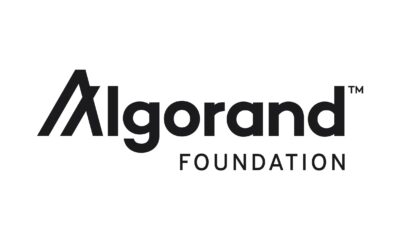News
Archax makes the abrdn money market fund accessible and transferable on the Algorand blockchain using the Quantoz EURD e-money token

Algorand’s native “code-free” atomic transaction allows for efficient trading without having to rely on smart contract code
BARCELONA, Spain and LONDON and UTRECHT, Netherlands, June 27, 2024 /PRNewswire/ — Today, the Algorand Foundation, ArcadeAND Payments Quantoz announced:
- The first tokenized money market fund has arrived on Algorand following Archax’s issuance of tokenized interests in abrdn 3.8 billion euro money market fund1.
- The integration between Quantoz Payments and Archax enables the use of EURD e-money on the Archax digital asset platform.
- Native “codeless” atomic settlement of the EURD/fund token in secondary market peer-to-peer transactions enables immediate execution of interdependent transactions in a predefined order.
By combining robust tokenized assets, on-chain digital currency, and native atomic settlement, the partners were able to demonstrate the feasibility and efficiency of moving the end-to-end investment and cash settlement process on-chain: investment, asset transfer, trading, settlement, and distributions.
Nick Haasnoot, CEO of Quantoz Payments, comments: “The use of EURD to purchase Money Market Funds in tokenized format is an acceleration to implement more tokenized financial instruments. Delivery Versus Payment via regulated e-money will form the basis of expected broad acceptance of this product, with opportunities for both retail and institutional investors across a variety of assets.”
Graham Rodford, CEO and co-founder of Archax, comments: “There is now real momentum for real-world tokenized assets, and regulated yield instruments, such as money market funds, are at the forefront of this activity the “cash leg” of on-chain settlement has generally proven to be more challenging than the “asset leg” and the use of digital native money, such as EURD, can be an important tool in unlocking the benefits offered by on-chain financial markets. -chain. can bring. We are pleased to work with Algorand and Quantoz to deliver the increased transparency and efficiency that blockchain/DLT offers.”
Russell Barlow, Global Head of Multi-Asset and Alternative Investment Solutions at abrdn, commented: “At abrdn, we are committed to driving digital innovation in investment management and are pleased to see continued progress in this space. This development highlights the importance of institutional infrastructure providers and we congratulate Archax, Quantoz and the Algorand Foundation on this key milestone.”
“The future of finance is truly immediate, including instant finality of transactions. This partnership between Archax and Quantoz to bring both a digital euro and a tokenized fund to Algorand makes this a reality for registered investors across Europe,” said Eric Wragge, Global Head of Corporate Development and Capital Markets at the Algorand Foundation. “The impact of combining tokenized assets and a digital euro is significant, and we look forward to bringing even more innovations like this to Algorand’s institutional-grade, quantum-secure blockchain.”
EURD and Quantoz Payments
EURD, a programmable digital euro from the European Union, is issued on Algorand by Quantoz Payments, a licensed electronic money institution (EMI) and regulated by the Dutch Central Bank. EURDs in issue are more than backed by a 102% surplus of high-quality liquid assets subject to strict Central Bank supervision and held in a remote bankruptcy foundation, Stichting Quantoz. EURDs can be created by sending funds via the SEPA payment network and holders have the right to redeem the face value at any time.
Asset Tokenization and Archax
Archax is headquartered in London and is the first ever company to be authorised by the UK’s Financial Conduct Authority (“FCA”) as a digital securities exchange, custodian and broker-dealer, as well as the first to be listed on the regulator’s Cryptoasset Register. Consistent with these regulatory authorisations and its status as a distributor of abrdn products, Archax is able to a) purchase and hold fund shares in a remote insolvency trust, b) issue Algorand Standard Asset tokens representing beneficial ownership of the underlying fund shares, and c) observe the Algorand blockchain to identify peer-to-peer transfers and changes in ownership. Additionally, given its integration with Quantoz, it is able to accept, distribute and redeem EURD, which can be used to accept deposits, process withdrawals, distribute coupons, interest payments or dividends.
Under Archax’s onboarding process, qualified investors can invest in, hold and trade the range of tokenized products available on Archax’s digital asset platform, which includes access to Archax’s money market funds.
To comply with AML and regulatory requirements, Archax-issued tokens can only be transferred between Archax-authorized wallets.
Transaction orchestration and Algorand
A unique feature of the Algorand blockchain is that the atomic swap functionality — the controlled exchange of assets if and only if all parties fulfill their end of the bargain — is built into the protocol itself and does not require smart contract programming. Algorand atomic swaps enable group transactions to be executed, without counterparty risk and with precise, consensus-enforced ordering of transactions, a key requirement for many types of complex financial workflows.
Additionally, atomic swaps benefit from Algorand’s instant finality, which means that all transactions are final the moment a new block is created (~3 seconds). All interdependent transactions that are part of an atomic swap are guaranteed to be executed in the same block.
Quantoz and EURD Payment Information
Quantoz Payments is incorporated in the Netherlands and is a 100% subsidiary of Quantoz NV Quantoz Payments is an issuer of electronic money in the form of electronic money tokens. The Company holds an electronic money institution (EMI) license from the Dutch supervisory authority, the Dutch Central Bank.
EURD is the e-money token issued by Quantoz Payments. Funds received in exchange for e-money tokens are held by Stichting Quantoz, a remote entity in the event of bankruptcy, which ensures that such funds are safeguarded according to the requirements of MiCAR. The e-money tokens in circulation are 102% overcollateralized. Quantoz Payments and Stichting Quantoz are subject to the prudential supervision of DNB.
Notice: The EURD White Paper will be published on Quantozpay.com. Holders of EURD e-money tokens have the right to redeem at any time at face value, with redemption terms outlined in the EURD White Paper.
About Archax
Archax is a regulated, global digital asset exchange, brokerage and custody, headquartered in London. Founded by experts from the world of financial markets and supported by an expert advisory board, Archax offers a credible bridge between the blockchain-focused crypto community and the traditional investment space. Archax is the first company ever to receive FCA regulation as an exchange, custody and digital brokerage. It was also the first company to be listed on the FCA’s Cryptoasset Register as a VASP (Virtual Asset Service Provider). Archax was specifically designed to allow institutional investors to trade all types of digital assets, from cryptocurrencies to digital securities. It is built using existing, proven, resilient, scalable and high-performance exchange infrastructure, hosted in world-class data center space and integrated into your existing institutional trading workflow. For more information, go to www.archax.com.
About the Algorand Foundation
Algorand’s mission is to power a world where information is whole and innovative ideas can thrive. The Algorand Foundation supports Algorand’s rapidly growing ecosystem by providing a world-class development environment, supporting key infrastructure and defining technical standards, offering comprehensive support to builders and entrepreneurs, and providing the infrastructure for decentralized governance.
Founded by Turing Award-winning cryptographer Silvio Micali in 2019, Algorand has grown into a vibrant ecosystem of developers, entrepreneurs, and enterprise partners who benefit from institutional-grade certainty and resilience, while features like low fees, instant finality, and a minimal carbon footprint also appeal to the protocol’s millions of retail users. Builders of all kinds can use common programming languages like Python to develop advanced apps and protocols that solve important problems on a global scale: instant payments in war zones and disasters, self-sovereign identity for the disenfranchised, supply chain traceability for global trade, permissionless protocols that address financial inclusion, and the creation of entirely new markets through tokenization, to name a few. To learn more and start your Algorand journey, visit algorand foundation.
1 Assets managed as of 30 April 2024, https://abrdn.kurtosysweb.com/pdfs/F_STDI_en-GB-NN_LU0966092131.pdf
SOURCE Algorand Foundation
News
Blockchain Technology Will Transform Water Access and Management Globally

Disclosure: The views and opinions expressed here are solely those of the author and do not represent the views and opinions of the crypto.news editorial team.
Access to clean water is a basic human need, yet billions of people around the world still struggle to get it. According to the World Health Organization, over 2 billion people live in countries suffering from severe water stress, and this number is expected to continue to grow due to climate change and population growth.
Traditional water management systems have struggled to address these challenges, often hampered by inefficiencies, lack of transparency, and misallocation of resources. Blockchain technology offers a promising solution to these challenges, providing equitable access and sustainable use of this crucial resource.
The current state of water management
Water management today faces several pressing issues. Inefficiencies in water supply, distribution, and use, coupled with a lack of real-time monitoring, often result in resource waste and misallocation. Many water sources fail to realize their full potential due to infrastructure and financing shortfalls. For example, the Environmental Protection Agency (EPA) report indicated that the United States would need to invest $625 billion over the next 20 years to repair, maintain and improve the country’s drinking water infrastructure due to aging pipes and other infrastructure problems. Additionally, in the United States alone, household leaks can to waste nearly 900 billion gallons of water per year nationwide. This is equivalent to the annual domestic water consumption of nearly 11 million homes.
Furthermore, corruption and mismanagement of water resources can cause unequal distribution, with disadvantaged communities often bearing the brunt of water scarcity. For example, South Africa is struggling with myriad challenges to its water security: drought, inadequate water conservation measures, outdated infrastructure, and unequal access to water resources. The country faces significant water scarcity, with demand expected to outstrip supply by 2030, creating a projected gap of 17%.
Furthermore, the global water industry is highly monopolized, with a few key players controlling a significant share of the market. These companies exert substantial influence over the water supply chain, often prioritizing profit over equitable distribution and environmental responsibility. This concentration of power can lead to inflated prices and limited access for vulnerable populations. The global bottled water market alone is projected to reach $509.18 billion by 2030, with these large companies capturing a significant share of revenue. This monopolization exacerbates existing inequalities in water access and highlights the need for more decentralized and community-driven water management solutions.
Source: Grand View Search
The potential of blockchain in water management
Blockchain technology can address these issues by providing a transparent, secure, and decentralized platform for water resource management. This approach offers several advantages:
- Transparency and accountability. Blockchain’s immutable ledger ensures that all transactions and data entries are transparent and cannot be changed once recorded. This transparency can reduce corruption and ensure that water resources are allocated fairly and efficiently. For example, blockchain can be used to track water usage from source to end user, providing a clear record of how water is distributed and used. This level of transparency can help hold authorities accountable and manage water resources sustainably.
- Efficient resource management. Blockchain can facilitate the creation of smart contracts, which are self-executing contracts with the terms of the agreement written directly into the code. These contracts can automate water distribution based on real-time data, directing water to where it is needed most. For example, smart contracts could be used to manage urban water supply systems, automatically adjusting water distribution based on real-time consumption patterns and demand. This can help optimize water use, reduce waste, and ensure that households and businesses receive the right amount of water at the right time.
In Dubai, the Dubai Electricity and Water Authority (DEWA) has implemented a blockchain-based smart water network initiative as part of its broader smart city strategy. This project integrates blockchain technology with IoT sensors to monitor water usage in real time, manage distribution, and detect leaks. The decentralized ledger ensures data integrity and transparency, enabling more efficient water management and reduced waste. DEWA’s initiative aims to improve sustainability and resource management in the rapidly growing city, highlighting the potential of blockchain to support urban water management and conservation efforts.
Community participation and ownership
Through blockchain, individuals can directly control and monetize their access to water resources, eliminating the need for third-party intermediaries. This direct control model allows local communities to make collective and transparent decisions about their water use. By managing their water directly from the source, communities can tailor water management practices to their specific needs, promoting equitable distribution and encouraging a sense of accountability and stewardship.
Additionally, future models could allow people to monetize their access to water through web3 technologies. For example, a community-to-business (C2B) model could allow people to sell water directly to companies. In this model, people do not have to own the water directly, but can profit by staking their tokens during event sales pools. This approach not only supports sustainable water management, but also creates economic opportunities for community members. Additionally, a “Burn to Secure” protocol can be used to provide water allocation rights. This protocol provides a true sense of water security and financial opportunity by allowing people to redeem their rights. This system not only secures future water allocations, but also increases token scarcity and value.
Additionally, a pure sense of investment is achieved through investments in water sources. This leads to potential financial returns and dividends by addressing the inefficiencies in water supply mentioned above. By investing to finance infrastructure projects, such as building factories and improving distribution systems, more water can be brought to communities, creating additional economic opportunities.
Monetizing water access through the C2B model, the “Burn to Secure” protocol, and investments in water sources all generate economic benefits for the community, promoting a more equitable and efficient water management system.
Overcoming challenges
While blockchain technology has the potential to improve water management, there are challenges to its adoption. The complexity of blockchain systems and the need for technological infrastructure can be barriers, especially in developing regions. Additionally, there are concerns about the significant energy consumption of blockchain networks. However, technological advances and the development of more energy-efficient blockchain solutions are helping to alleviate these concerns. Additionally, education and capacity building are key to ensuring stakeholders understand how to effectively use blockchain technology. Governments, NGOs, and private sector partners need to work together to provide training and support to communities and water management authorities.
Blockchain technology offers a practical and effective means to improve water management. In addition to addressing inefficiencies, blockchain empowers communities, promotes sustainable practices, and opens up new economic opportunities through models like community-to-business (C2B). As we face the growing challenges of climate change and population growth, blockchain is not only an innovative solution, but represents a fundamental shift in the way we manage and value water resources. Adopting blockchain in water management is essential to creating a sustainable and equitable future by changing the way we interact with and protect our most vital resource.

Jean-Hugues Gavarini
Jean-Hugues Gavarini is the CEO and co-founder of LAKE (LAK3), a real-world asset company leveraging blockchain technology to decentralize access to the global water economy. LAKE aims to ensure access to clean water for all, protect water resources, and deliver water to those in need through innovative technologies. Jean-Hugues has a diverse career spanning the luxury, fashion, and footwear industries. His career path includes notable successes at Mellow Yellow, Cremieux, and Tod’s. Raised between Silicon Valley and the French Alps, Jean-Hugues has always been immersed in technology and freshwater resources. In 2018, Jean became the CEO of Lanikea Waters, a water solutions entity based in the French Alps. In 2019, the concept of LAKE was born, embodying his commitment to innovation and sustainability.
News
Blockchain and AI Expo 2024
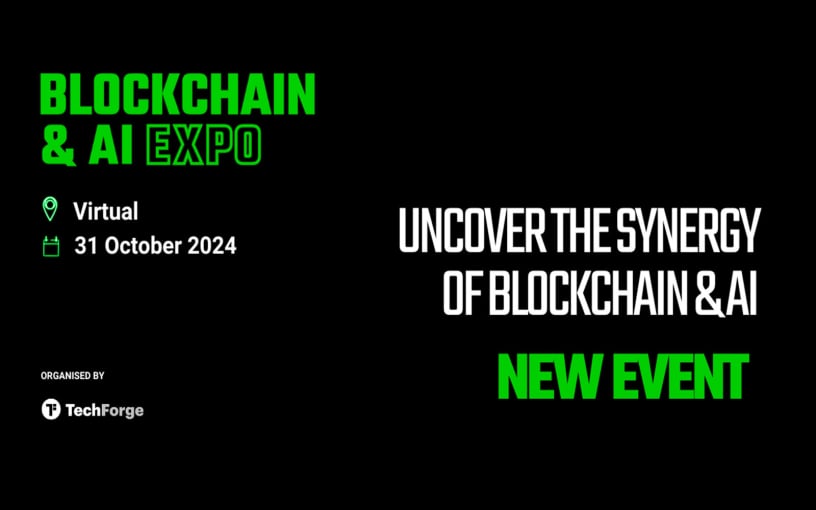
With rapid advances in the world of AI and blockchain, there are opportunities to leverage the security and transparency features of blockchain to improve the reliability and trust of AI systems and data transactions.
Explore the synergy of these advanced technologies in virtual mode Blockchain and AI Expowhich takes place on October 31, 2024 TO 10:00 GMT.
The event features cutting-edge presentations led by leading experts in evolving fields. Presentations are set to explore opportunities and challenges in the fusion of blockchain and AI, real-world applications, ethics, innovations in environmental sustainability, and more!
Gain a comprehensive understanding of how these technologies can synergistically drive innovation, optimize operations, and promote strategic growth opportunities. Develop your knowledge to facilitate informed decision making and give your company a competitive edge in the growing technology landscape.
News
Nigeria Eyes National Blockchain Nigerium for Data Sovereignty
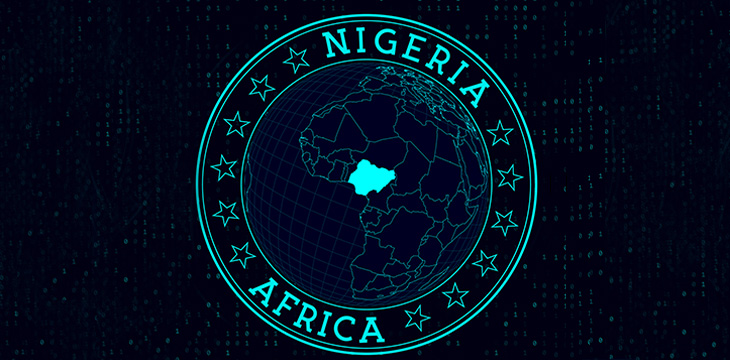
Nigeria is keeping an eye on a new native blockchain network to protect the country’s data sovereignty.
According to local media, a team from the University of Hertfordshire has proposed the new blockchain, Nigeriato the National Information Technology Development Agency (NITDA).
Chanu Kuppuswamy, who leads the team, argued that relying on blockchain networks whose developers are located in other regions poses national security risks to the Nigerian government. He further said that Nigerium would allow the West African nation to customize the network to meet specific needs, while also promoting data sovereignty.
In his presentation, Chanu cited the recent migration of Ethereum to test of participation (PoS) consensus as an instance in which no Nigerians were involved but whose impact is far-reaching.
“Developing an indigenous blockchain like Nigerium is a significant step towards achieving data sovereignty and promoting trust in digital transactions in Nigeria,” he said.
While receiving the proposals in Abuja, NITDA’s Kashifu Abdullahi acknowledged the benefits a local blockchain would bring to Nigeria, including increased security of citizens’ data.
However, a NITDA spokesperson later clarified that Nigerium is still at the proposal stage and that the government has not yet decided whether to proceed or not.
“The committee is still discussing the possibility with stakeholders. Even if a decision is finally made, there is no guarantee that the name will be Nigerium,” the spokesperson told the media.
Nigerium’s reception in the country has been mixed. Some, like financial analyst Olumide Adesina, To say the network is “dead on arrival”. He believes the Nigerian government’s poor record in following through on its big technology plans will claim another victim. He pointed to the eNaira as a missed opportunity whose chances of success were much higher than those of Nigerium.
Others welcomed the proposal. Chimezie Chuta, who chairs the renewed The Nigerian Blockchain Policy Committee is “extremely optimistic“that Nigerium will be more successful than eNaira.
Speaking to a local news agency, Chuta stressed that eNaira failed because the central bank initiated the project on its own, without involving any stakeholders.
“They just cooked it and expected everyone to like it. [With Nigerium]there will be a lot of collaboration,” he said.
Registration of property title, digital identity and Certificate Verification are among the use cases that Nigerium is expected to initially target. However, Nigeria has already made progress in some of these fields through public blockchains.
SPPG, a leading school in governance and politics, announced in May the country’s first blockchain certificate verification system. Built on the The BSV BlockchainIt was developed in collaboration with the blockchain data recording company VX Technologies and local lender Sterling Bank.
Watch: The Future Has Already Arrived in Nigeria
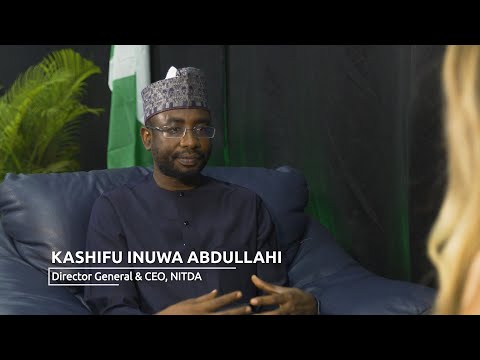 Italian: https://www.youtube.com/watch?v=M40GXUUauLU width=”560″ height=”315″ frameborder=”0″ allowfullscreen=”allowfullscreen”>
Italian: https://www.youtube.com/watch?v=M40GXUUauLU width=”560″ height=”315″ frameborder=”0″ allowfullscreen=”allowfullscreen”>
New to blockchain? Check out CoinGeek Blockchain for Beginners section, the definitive guide to learn more about blockchain technology.
News
Cambodian CBDC Developer to Build Palau Bond Market on Blockchain: Report
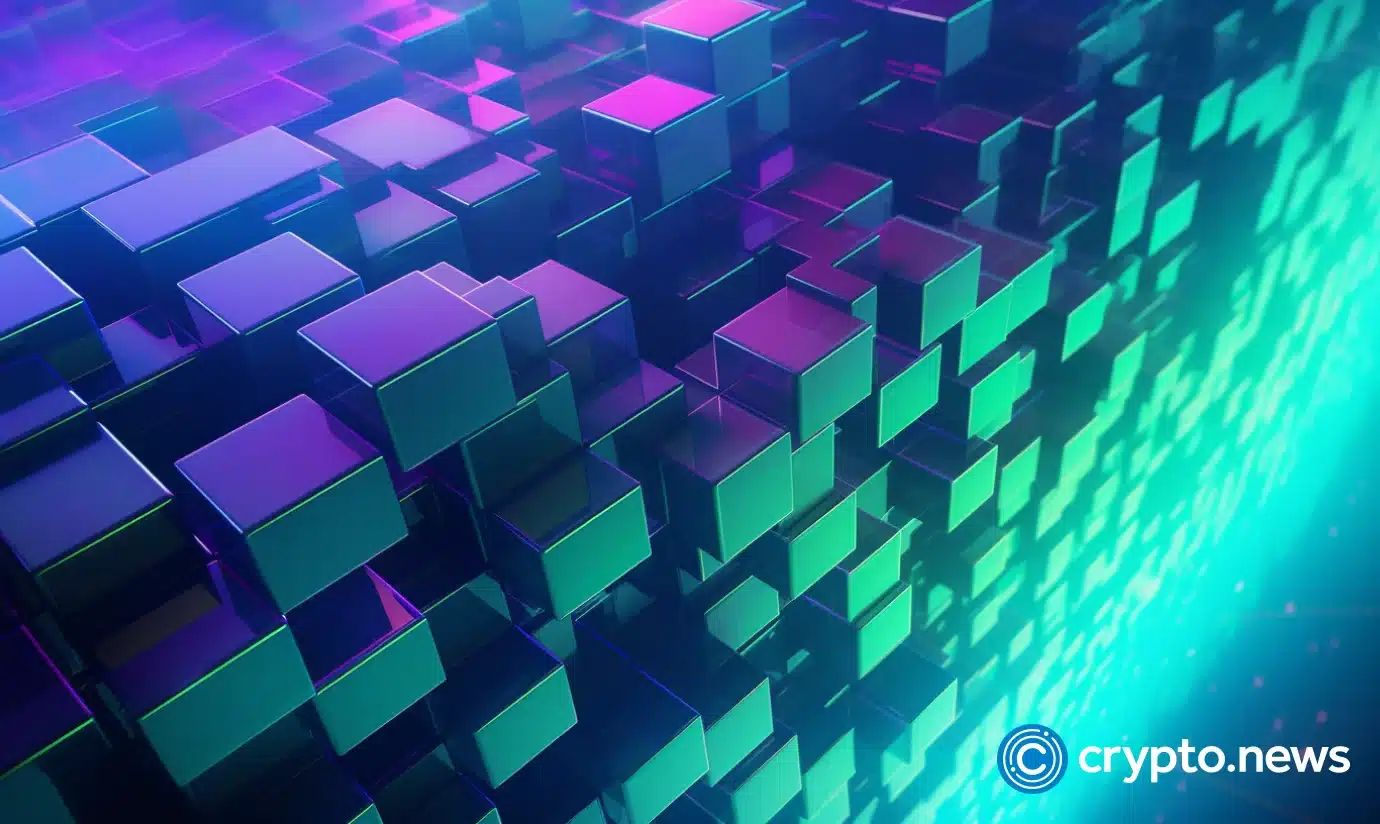
A Japanese fintech developer will build a blockchain-based bond market gateway for Palau, aiming to launch a trial in 2024 and a full launch the following year.
Japanese fintech developer Suramitsubest known for developing a central bank digital currency (CBDC) for Cambodia, is intended to build a Blockchain-gateway to the bond market based on the Pacific island nation of Palau, Nikkei He learned.
Soramitsu won the contract and plans to introduce the market on a trial basis in fiscal 2024, with a full launch scheduled for the following year, allowing the Palauan government to issue bonds to individual investors and efficiently manage principal and interest payments, according to the report.
The total cost of the project is estimated at several hundred million yen ($1.2 million to $5.6 million), less than half the cost of a non-blockchain alternative, people familiar with the matter said. The project has reportedly received support from Japan’s Ministry of Economy, Trade and Industry, with Japan’s foreign and finance ministries providing strategic and management advice on the project.
Soramitsu’s successful development of Cambodia’s CBDC in 2020 has boosted its reputation, with the digital currency’s popularity soaring, with over 10 million accounts opened by December 2023, representing 60% of Cambodia’s population. Following this, Cambodia’s central bank governor Chea Serey indicated intends to expand the reach of its CBDC internationally, particularly through collaboration with UnionPay International, the Chinese card payment service, and other global partners.
While Soramitsu’s work in Cambodia has been well received, the long-term popularity of CBDCs remains to be seen. As of late June, crypto.news reported a sharp drop in activity in India’s digital currency, the e-rupee, after local banks stopped artificially inflating its values.
According to people familiar with the matter, the Reserve Bank of India managed to hit the 1 million retail transaction milestone last December only after the metrics were artificially infiltrated by local banks, which offered incentives to retail users and paid a portion of the bank’s employees’ salaries using the digital currency.
-

 News1 year ago
News1 year ago“Captain Tsubasa – RIVALS” launches on Oasys Blockchain
-

 Ethereum1 year ago
Ethereum1 year agoComment deux frères auraient dérobé 25 millions de dollars lors d’un braquage d’Ethereum de 12 secondes • The Register
-
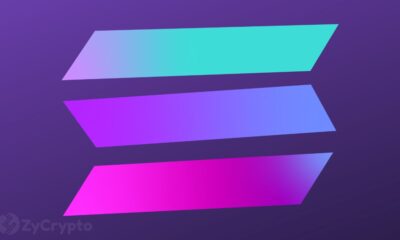
 News1 year ago
News1 year agoSolana ranks the fastest blockchain in the world, surpassing Ethereum, Polygon ⋆ ZyCrypto
-

 Videos1 year ago
Videos1 year agoIs Emorya the next gem💎 of this Bitcoin bull run?
-

 Videos1 year ago
Videos1 year agoHistoric steps for US cryptocurrencies! With a shocking majority vote!🚨
-
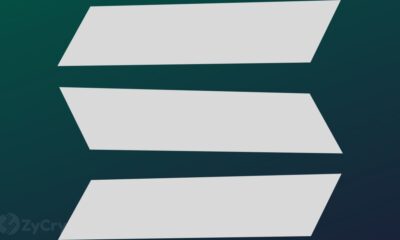
 News1 year ago
News1 year agoSolana Surpasses Ethereum and Polygon as the Fastest Blockchain ⋆ ZyCrypto
-
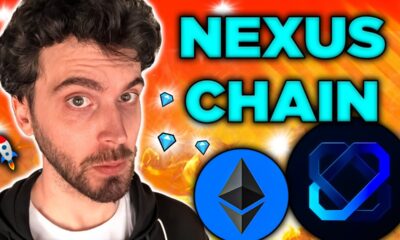
 Videos1 year ago
Videos1 year agoNexus Chain – Ethereum L2 with the GREATEST Potential?
-

 Ethereum1 year ago
Ethereum1 year agoScaling Ethereum with L2s damaged its Tokenomics. Is it possible to repair it?
-
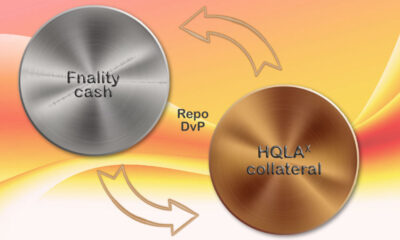
 News1 year ago
News1 year agoFnality, HQLAᵡ aims to launch blockchain intraday repositories this year – Ledger Insights
-
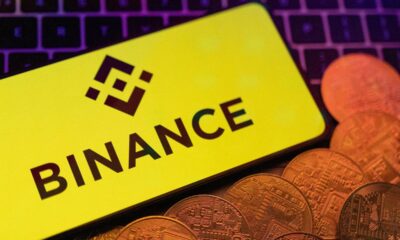
 Regulation1 year ago
Regulation1 year agoFinancial Intelligence Unit imposes ₹18.82 crore fine on cryptocurrency exchange Binance for violating anti-money laundering norms
-
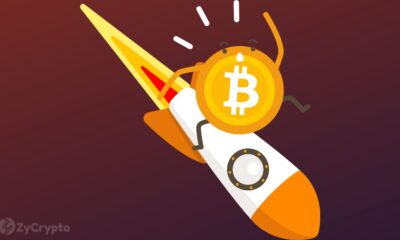
 Bitcoin1 year ago
Bitcoin1 year agoBitcoin Drops to $60K, Threatening to Derail Prices of Ether, Solana, XRP, Dogecoin, and Shiba Inu ⋆ ZyCrypto
-
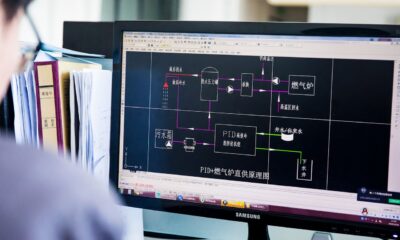
 News1 year ago
News1 year agoSendBlocks Debuts with Major Support to Improve Blockchain Data Management

